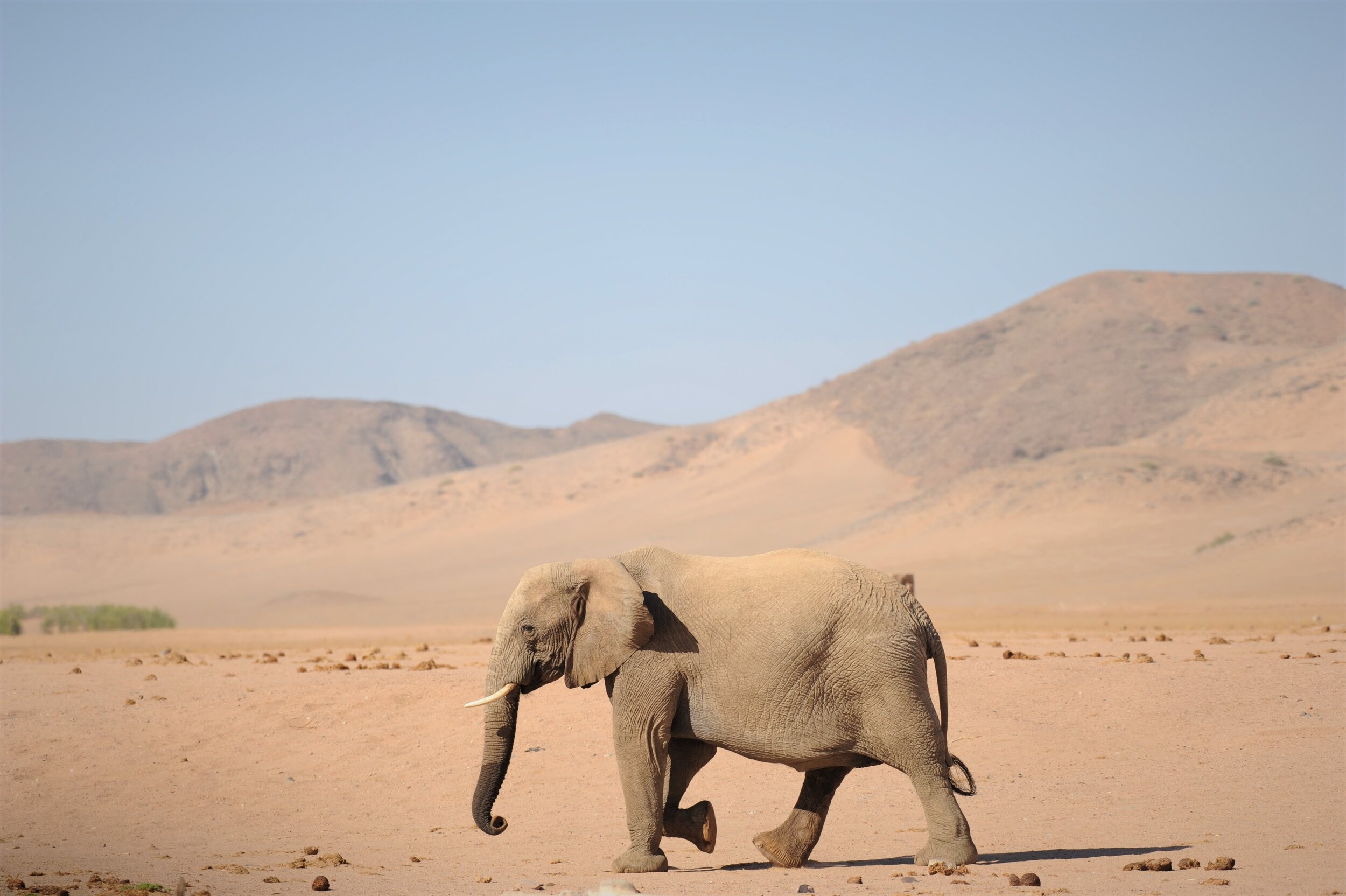ABOUT DESERT ELEPHANTS IN NAMIBIA
QUICK FACTS
Desert-dwelling elephant description: Desert elephants or desert-dwelling elephants are not a genetically distinct species of elephant, but are African bush elephants (Loxodonta africana) with unique characteristics. These elephants have made their home in the Namib desert in Namibia, Africa, and subsequently, these elephants exhibit small adaptations to the extreme temperatures and terrain.
Desert-dwelling elephant population in Namibia: We estimate the population of desert-dwelling elephants within the main riverbeds; Ugab, Huab, Hoarusib, Hoanib, and Uniab to be approximately 150 elephants.
African savannah elephant conservation status: Endangered (Population decreasing) IUCN, 2021
How much do elephants weigh? Male: 6-8 tonnes | Female: 2.7- 3 tonnes
Where do desert-dwelling elephants live? Arid to semi-arid desert encompassing 115,154 km2 of mostly sandy desert, rocky mountains and arid gravel plains in the northwest of Namibia.








